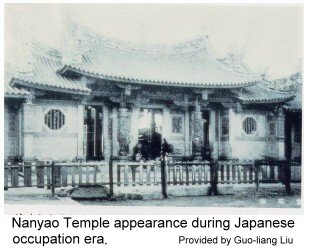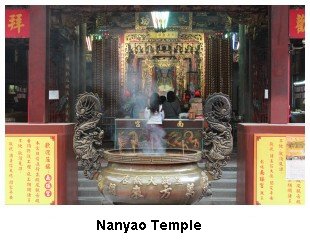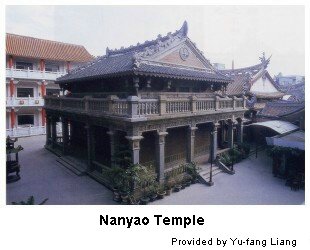Recognition of Nanyao Temple
<Geographical Location>
Nanyao Temple was built in the eighteen century, during the rule of Emperor Qianlong of the Qing Dynasty. The main god of the temple is Mazu. The temple is located in Nanyao Li, Changhua City, Changhua County, where it used to be the suburb of the southern gate of the old Changhua Town. Since built, it has been busy, and nowadays, it become one of the most popular old temples in Taiwan. On April 25th of 1985, the Ministry of Interior Affairs, in Taiwan, appointed Nanyao Temple at the third level of historical sites.
<History>
It is said that during the reign of Emperor Yongzheng, of the Qing Dynasty, when Changhua was just promoted to County and started to build the region, a kiln worker named Yangqian brought the burnt incense of Tianhou Temple from Bengang, which mainly worshipped Mazu. He hung the burnt incense at the hut, where the temple is located today for worship. Strange rays often shone into the sky at night. The nearby residents believed it was Mazu’s spirit, so they engraved a Mazu sculpture and began to worship there. In the third year of the rule of Emperor Qianlong, a hut was built for the sculpture and named Mazu Temple. In December of that year, the local gentries raised funds to build Nanyao Temple. In December 1872, a face-cleaning room was added to the left side of the temple for believers to wash their hands, and thus, the cylindrical pillars were finished. The temple had a new look, and it was finally completed. Since its incense originated from Bengang, the local believers regularly formed tour groups to make pilgrimages. The size of the pilgrim groups grew increasingly and Nanyao Temple became the largest Mazu organization in Taiwan. In the early years, Nanyao Temple and Beigang Chaotian Temple, Lugang Tianhou Temple, and Xingang Fengtian Temple were known as the top four busiest Mazu Temples.
<Architecture>
Nanyao Temple, facing east, has traditional palace-styled architecture with five doors, four halls, and two wings, and fuses in the features of Fujian, Western, and Japanese features, like a museum. It has been appointed as a historic site by the government. Besides the architecture, the decoration in the Guanyin Hall is also worthy of watching. It has mirrors with clay frames on two walls that are similar to western decoration. The chandeliers and wall lamps preserve the lighting style of the Japanese occupancy. The roof, copper ceiling, and eighteen Luohan framed walls are western features too. The shrine is Japanese-styled. All of the features together have made Nanyao Temple specifically unique among the traditional buildings in Taiwan. Additionally, Nanyao Temple is also known for having the finest temple in Changhua City because of the wood carving, stone carving, painting and caisson all have a very high artistic value.
The information above is taken from Wikipedia.http://zh.wikipedia.org



